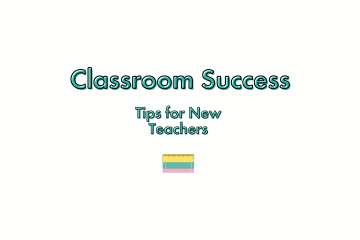Emotional regulation is a powerful component of executive function—it’s the ability to recognize, understand, and manage your emotions in a way that supports your goals. While emotions are part of being human, unchecked stress, frustration, or anxiety can derail even the best-laid plans. When learners can regulate their emotions, they’re more focused, resilient, and ready to tackle challenges head-on.
Why Emotional Regulation Matters
Picture this: A student is working hard on a writing assignment. Halfway through, they get stuck, start feeling overwhelmed, and a wave of frustration builds. If they don’t have tools to manage that frustration, they may give up or disengage. But with emotional regulation strategies in place, they can pause, reset, and return to the task with renewed focus.
Emotional regulation helps individuals:
- Stay calm and collected under pressure
- Make thoughtful, goal-aligned decisions
- Recover quickly from setbacks
- Persist through challenges with confidence
- Maintain strong social and academic relationships
And here’s the great news: Emotional regulation is not an innate trait—it’s a skill that can be practiced, modeled, and strengthened over time.
Strategies to Strengthen Emotional Regulation
- Name It to Tame It: Build Emotional Awareness
Before students can regulate emotions, they need to be able to identify what they’re feeling. Labeling emotions helps reduce their intensity and creates space for intentional response.
Try This:
- Teach students to pause and ask, “What am I feeling right now?”
- Use an emotions wheel or chart to build vocabulary around feelings
- Encourage journaling or reflection time during transitions.
Naming emotions helps learners feel seen, reduces overwhelm, and increases self-awareness—a first step toward regulation.
- Mindful Moments: Create Space Between Emotion and Action
Mindfulness builds the habit of noticing emotions without immediately reacting. A mindful pause allows students to shift from “reactive” to “responsive.”
Try This:
- Begin class or study sessions with a one-minute breathing exercise
- Teach grounding techniques like “5-4-3-2-1” (five things you see, four you can touch, etc.)
- Model noticing your own emotions and choosing a calm response
Regular mindfulness practice supports emotional balance and increases attention span over time.
- Reset Routines: Build Emotional Safety Nets
Having predictable “reset” strategies in place equips students to recover quickly when emotions get intense.
Try This:
- Help students create a personal “calm-down toolkit” with sensory tools, visuals, or affirmations
- Offer movement breaks or quiet corners during high-stress moments
- Encourage goal-setting rituals that include emotional check-ins
These routines teach students that it’s okay to feel big emotions—and they have the tools to come back to center.
Support Matters
Educators, coaches, and caregivers are in a powerful position to help students develop emotional regulation. By modeling calm problem-solving, validating emotional experiences, and offering practical tools, we create environments where focus and emotional resilience go hand in hand.
Next Step: Empower Emotionally Aware Learners
Emotional regulation doesn’t just support mental well-being—it lays the foundation for achieving academic and personal goals. Want to build your toolkit for supporting student success?
Explore our Executive Function Webinar—a practical, research-based course for educators, counselors, and coaches.
✅ Learn strategies to teach focus, regulation, and planning
✅ Help students move through emotions without losing momentum
✅ Foster calm, confident learners ready to thrive
Ready to go deeper?
→ Sign up for our FREE Hack Your Brain Webinar
→ Let’s equip students with the emotional tools they need to stay focused, meet goals, and bounce back stronger. 💪🧠✨



